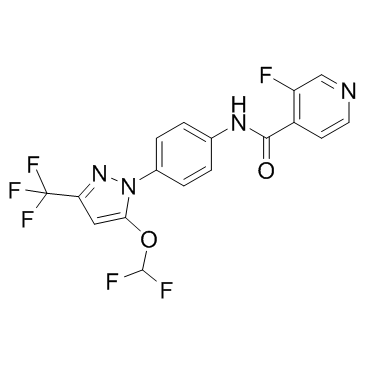NFAT Transcription Factor Regulator |
| Catalog No.GC31934 |
NFAT Transcription Factor Regulator is an IL-2 synthesis inhibitor with an IC50 of 182 nM.
Products are for research use only. Not for human use. We do not sell to patients.

Cas No.: 245747-71-1
Sample solution is provided at 25 µL, 10mM.
NFAT Transcription Factor Regulator is an IL-2 synthesis inhibitor with an IC50 of 182 nM.
NFAT Transcription Factor Regulator is compound example 19. NFAT Transcription Factor Regulator inhibits IL-2 synthesis with an IC50 of 182 nM. It inhibits human and rat PBMC proliferation with IC50s of 82 and 146 nM, respectively. It is able to inhibit IL-4 and IL-5 production in human T-cell lines with similar potency to its effects on IL-2 release[1].
NFAT Transcription Factor Regulator is found to have an inhibitory potency approximately 10-fold better than that of cyclosporine. Comparable inhibitory effects on T-cell IL-2 production are obtained with NFAT Transcription Factor Regulator and cyclosporine at doses of 3.0 and 30 mg/kg, po, respectively. The efficacies achieved in monkeys in vivo for blocking T-cell cytokine production suggest that NFAT Transcription Factor Regulator has potential similar to that of cyclosporine for use in transplantation[1].
[1]. Djuric SW, et al. 3,5-Bis(trifluoromethyl)pyrazoles: a novel class of NFAT transcription factor regulator. J Med Chem. 2000 Aug 10;43(16):2975-81.
Average Rating: 5 (Based on Reviews and 40 reference(s) in Google Scholar.)
GLPBIO products are for RESEARCH USE ONLY. Please make sure your review or question is research based.
Required fields are marked with *




















